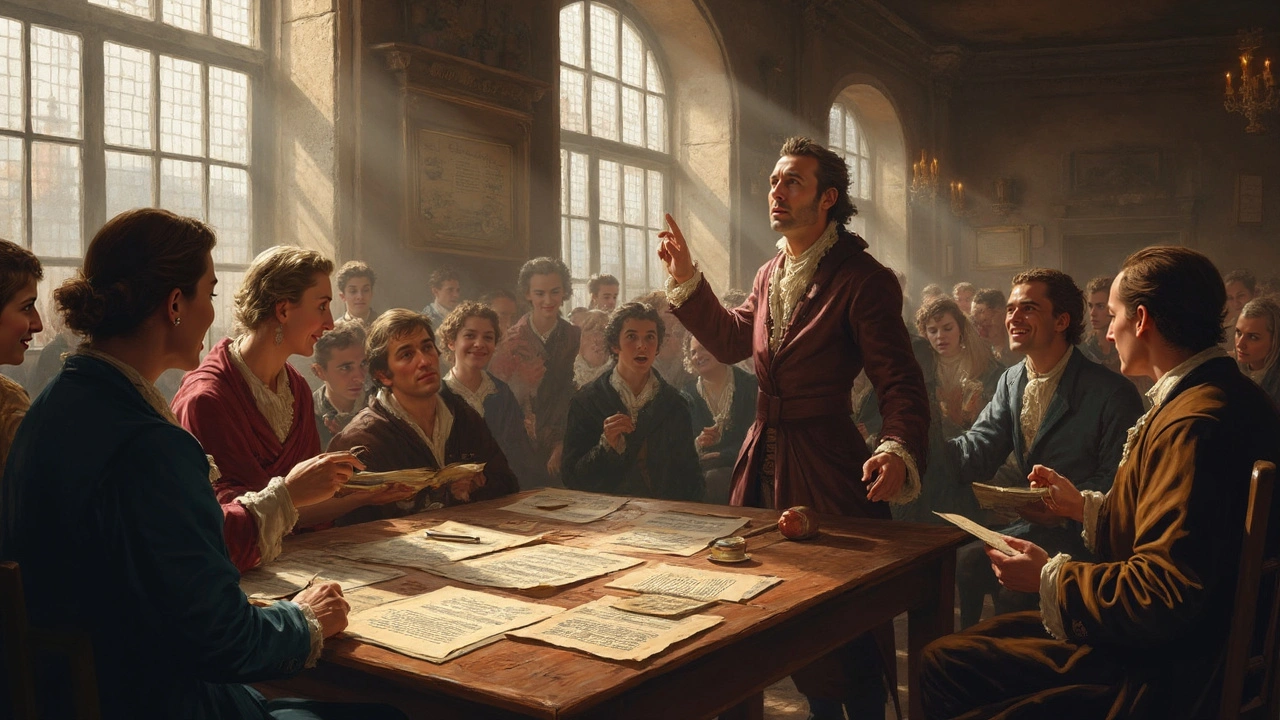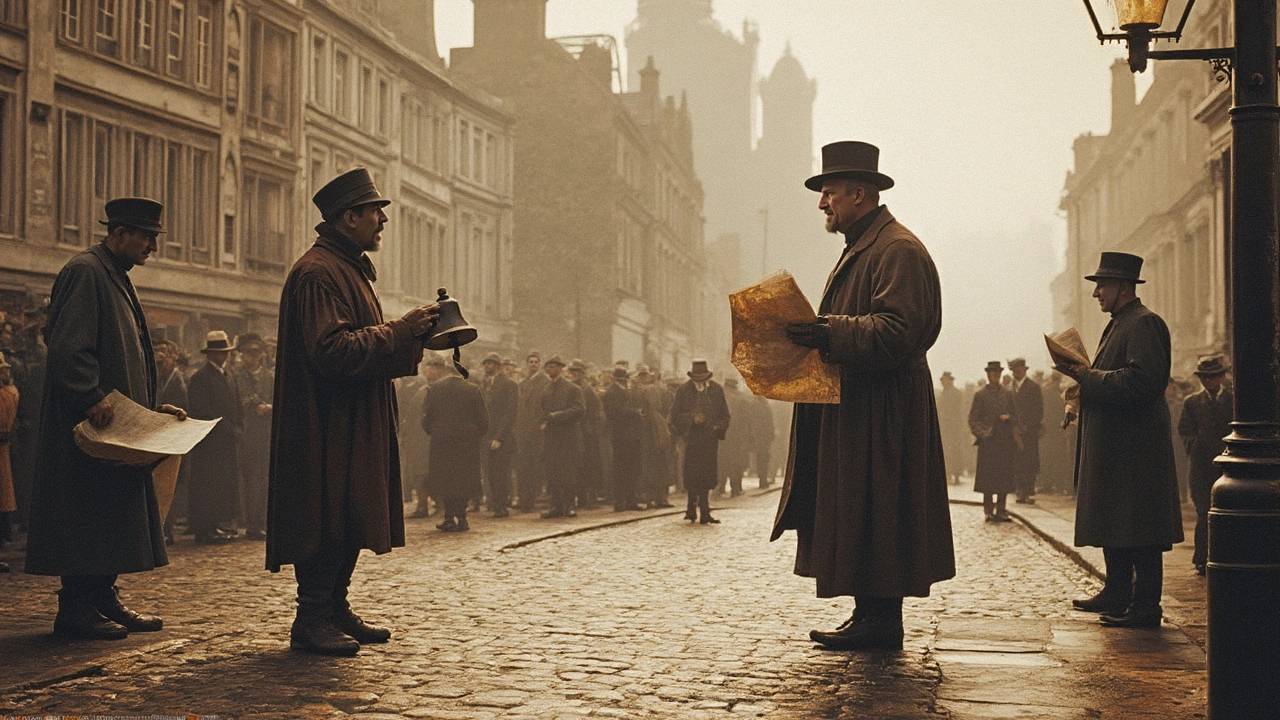
Imagine living in a world with no newspapers, no websites, no tweets about breaking news. When the craving for a good story hits, where would you go? The quest for the very first journalist isn’t as easy as pointing at one name in a dusty book—it turns out, the roots go way back, and the idea of a "journalist" is messier than you might think.
People have wanted to know what’s happening in their community since, well, forever. The first humans weren’t holding microphones, but they were sharing big news around campfires—things like who spotted a wolf or which berries to avoid. Then, as writing became a thing in ancient times, reports of big events—like wars or gossip from the market—started popping up on clay tablets or parchment scrolls. Craving a historical tip? Check out the Acta Diurna from ancient Rome. It was basically their version of a daily news sheet, posted in public spaces over 2,000 years ago. Anyone could read it and see what the Roman Senate was up to.
So, when we hunt for the "first journalist," we’re looking for the first person who gathered stories, wrote them down, and shared them with others. Sound simple? It isn't. There’s more than one contender, depending on what you count as real journalism. If you want some trivia to impress your friends, remind them the first "professional news writers" probably looked nothing like modern journalists. They might have been scribes, pamphleteers, or busybodies in a crowded London coffeehouse.
- Oldest News and Where It Began
- Meet the Early Journalists
- The Evolution of Journalism
- Why Early Journalism Still Matters
Oldest News and Where It Began
If you think news is a modern thing, it’s wild to realize people have been swapping stories since writing was invented. The earliest news was simple: draw it, scratch it, or carve it so others would know what happened. No printing press, no YouTube—just raw updates, recorded any way they could.
The first journalist probably didn’t have a desk or deadlines, but folks back then took sharing news seriously. In ancient Rome, the Acta Diurna showed up around 59 BC. Imagine walking by a busy city square and seeing the day’s happenings posted for everyone. These were written on giant boards and placed in public areas. What was in them? War news, legal proceedings, even gladiator match results. Basically, Roman Twitter but a lot slower.
Fast forward to China, where by the Tang dynasty (around 618-907 AD) they had the “bao.” This was a court report, circulated among high officials. It wasn’t something your neighbor could grab at the corner shop, but it did keep officials informed on state affairs. What links all these? The craving to be in the know—and the power to inform others.
"For centuries before newspapers, kings and commoners relied on handwritten or posted news sheets to catch up on what mattered most." — BBC History
Here’s a quick look at how early news reports stacked up:
| Era | Location | Form of News | Audience |
|---|---|---|---|
| 59 BC | Ancient Rome | Acta Diurna—public inscriptions | Citizens |
| 618 AD | China | Bao—governmental bulletins | Officials |
| 1566 AD | Venice | Gazetta—printed newsletters | Public |
If you want to spot serious news from the ancient past, check if someone took the time to record it and put it where lots of people could see. Turns out, showing off what you know isn’t just for today’s social media.
Meet the Early Journalists
If you’re expecting someone with a press badge or a digital camera, forget it. The earliest journalists often didn’t even call themselves that. They were writers with a nose for news and a drive to tell others what was happening. The first journalist title usually gets thrown around between three main contenders, depending on where you draw the line.
- Julius Caesar’s Rome (59 BCE): The Acta Diurna might be the earliest "newspaper." These were handwritten news sheets nailed up in public places with updates on politics, trials, and even gladiator fights. No single name surfaces, but Roman scribes likely handled this work for the official record.
- Johann Carolus (Germany, 1605): He's the man behind the first regularly printed newspaper, Relation aller Fürnemmen und gedenckwürdigen Historien. Carolus collected news from traveling merchants and wrote it all up. The first news desk? Probably his kitchen table.
- London’s coffeehouse scribes (late 1600s): People like Nathaniel Butter published the first English newspapers. These weren’t front-page headlines like today. Instead, they were news books—collections of reports about wars, scandals, and politics from all over Europe.
To give you a sense of how things evolved, here’s a quick look at some "firsts" in the journalism world:
| Name | Place | Year | Claim to Fame |
|---|---|---|---|
| Unknown Scribes | Ancient Rome | 59 BCE | Acta Diurna record keepers |
| Johann Carolus | Strasbourg, Germany | 1605 | First printed newspaper |
| Nathaniel Butter | London, UK | 1621 | First English newspaper publisher |
These early journalists did a lot by today’s standards. They had to get news from letters, travelers, and gossip—often with no way to fact-check like we can now. But their main job was the same as modern reporters: find out what’s important, write it down, and share it. If you ever feel frustrated that your news app is slow, remember these folks had to wait days, sometimes weeks, for stories to arrive.

The Evolution of Journalism
Things really started moving when the printing press came onto the scene in the 15th century. Before that, sharing news meant copying stuff out by hand or shouting in the street. With the press, suddenly you could slap together hundreds of newsletters without breaking a sweat. In 1605, a German publication called Relation showed up—most folks see it as the very first real newspaper. The whole idea of gathering news for the public kind of exploded after that.
In England, news sheets called "corantos" popped up by the 1620s. Folks in London loved them. They were thin, kind of basic, often just foreign news, and not what we’d call super reliable—but they kicked off a whole new way to spread information. The Oxford Gazette (now The London Gazette) appeared in 1665, bringing a more official style, and it’s still rolling today. These early papers didn’t have bylines or fancy headlines. Just fact after fact, quickly printed and passed around—especially during crisises like plagues or wars.
The next big jump happened in the 18th and 19th centuries. Newspapers in the UK and elsewhere started reaching everyone—not just rich people—and reporters turned into pros. Newsrooms grew bigger. The telegraph made it possible to get updates halfway across the world in hours instead of weeks. Suddenly, breaking news was really fast news. People compared facts, challenged leaders, and formed their own opinions based on what they read.
Fast forward to the 20th century, and journalism spread from print to radio, then TV, and finally the internet. Each tech leap increased the speed and reach of first journalist style reporting. Today, anyone with a smartphone can break a story, but traditional methods—like checking facts and interviewing sources—still matter as much as ever.
If you’re digging into the history of news, pay attention to those big shifts: printing, the first real newspapers, the birth of the press in the UK, and the steady march to digital. Every jump changed not just how fast we get our news, but how we think about it.
Why Early Journalism Still Matters
If you think early news was just old stories with bad handwriting, think again. Those first reporters helped shape what we expect from first journalist work even now. The rules around fact-checking, staying independent, and choosing what to share were all kicked off way before the internet showed up.
Here’s a real example: The "Acta Diurna" in ancient Rome told people what the Senate decided each day, trials, and even social events. Fast forward to 17th-century England, and suddenly, printed newsletters were selling by the thousands. People wanted news, and they wanted it quick. This sparked the role of the public in keeping leaders honest—it wasn’t just about reading, it was about holding power to account.
Ever hear of the "Fourth Estate"? Journalists were named the unofficial watchdogs of society way back in the 1700s, right around when British newspapers like The London Gazette started printing regular issues.
- The first printed newspapers set standards for regular publication and clear sources.
- Early journalists brought a big shift in public opinion—reporting wasn’t just facts, but how those facts affected real lives.
- The idea of "news for all" took root in the coffeehouses and busy streets, making journalism part of everyday conversation.
Old journalism habits are still packed into today’s media. When you scroll on your phone or tap a news app, you’re part of a tradition that’s hundreds of years old. Fact is, being able to question, research, and challenge information started way back when "news" was just a sheet pinned to a wall.
| Period | Innovation in Journalism | Impact |
|---|---|---|
| 59 BCE (Rome) | Acta Diurna (Daily Gazette) | Publicly shared official news |
| 1605 (Germany) | First printed weekly newspaper | Regular, mass-distributed news |
| 1665 (England) | The London Gazette | Trusted source for national news |
The next time you hear someone say the news is dead, just remember—it’s been around since people could write. The tech changes, but the reasons for news are the same: keep folks in the loop, challenge the powerful, and spark the conversations that shape our world.